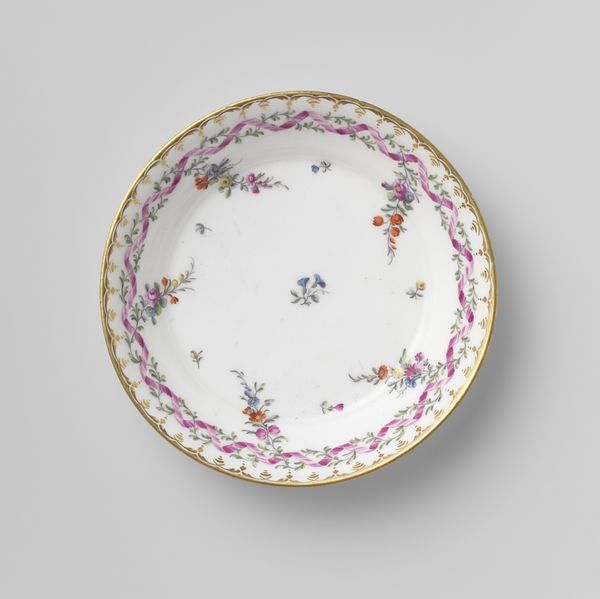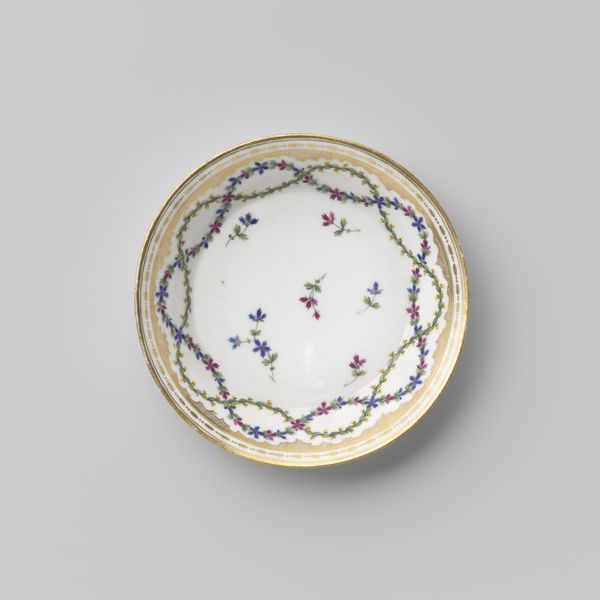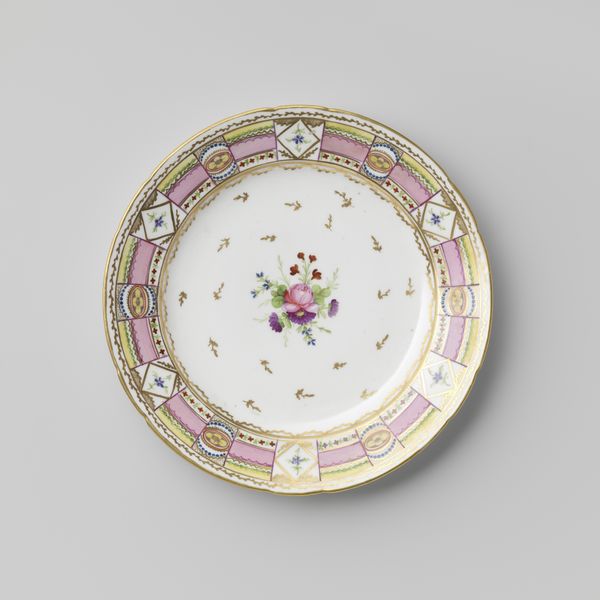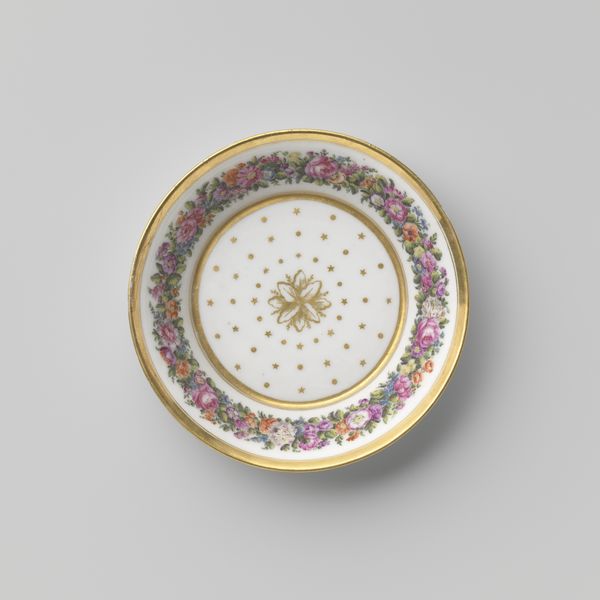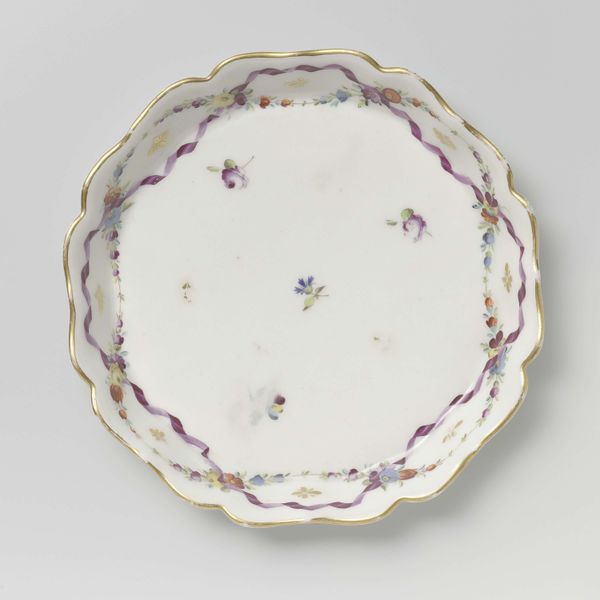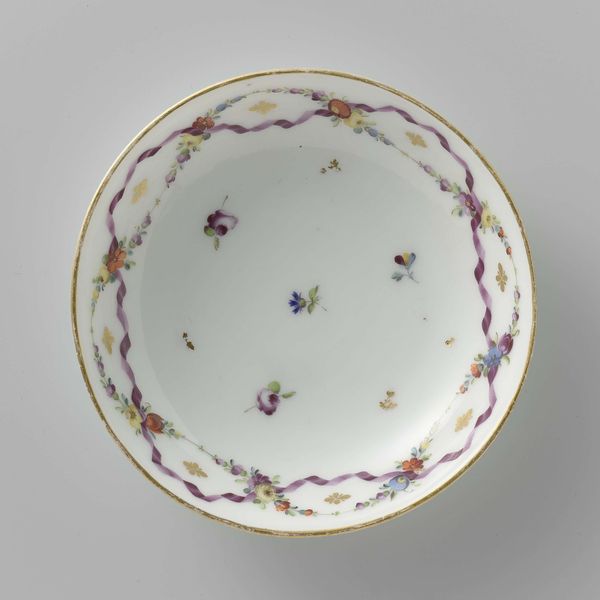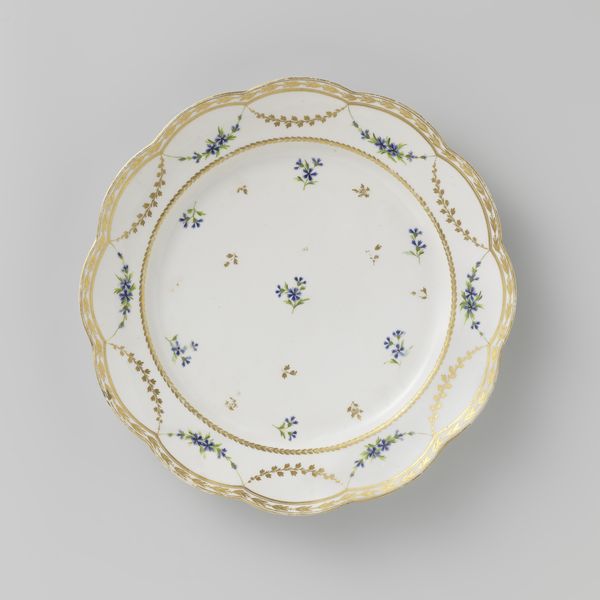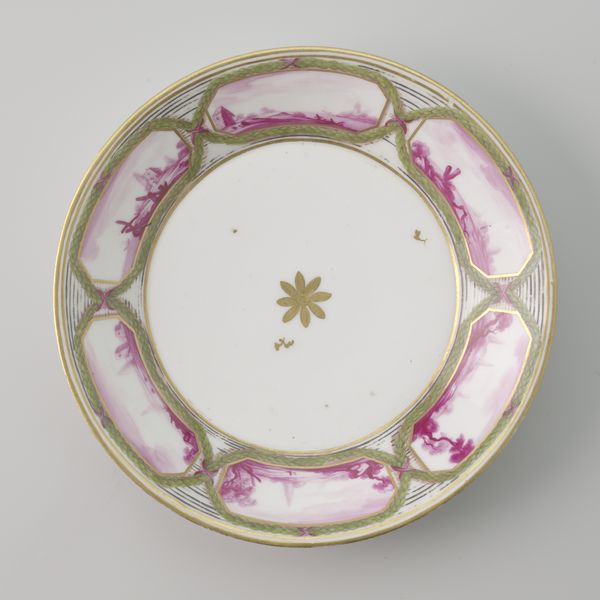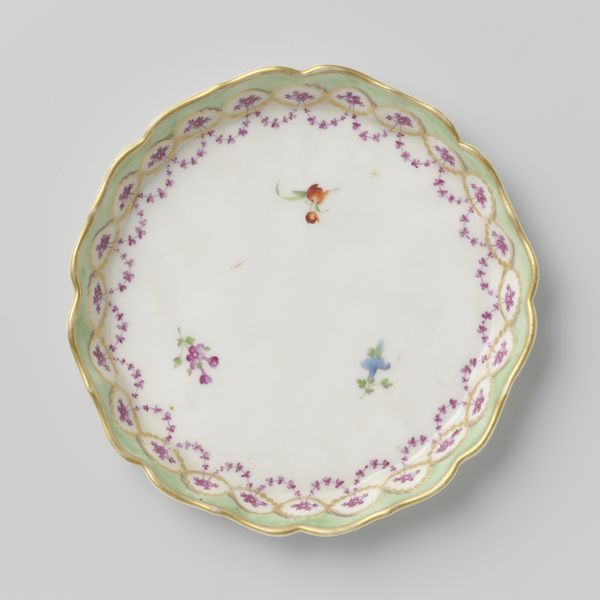
Dimensions: height 3.5 cm, diameter 19.5 cm
Copyright: Rijks Museum: Open Domain
Curator: Looking at this decorative plate, simply titled "Schotel," created sometime between 1772 and 1784, you can immediately perceive its Rococo elegance. It is held in the collection of the Rijksmuseum. What’s your impression, Editor? Editor: My immediate reaction is of delicacy. The porcelain appears thin and light, and the scattered floral motifs suggest an almost ephemeral beauty. There's a clear emphasis on refined detail, which makes me think about the skilled labour required to produce this piece. Curator: Indeed. The overall structure directs your gaze toward the center. The concentric organization leads inward to what feels like a carefully composed emptiness, allowing a moment of visual rest. And the undulating rim breaks with pure geometric constraint. The placement of each flower is precise. Editor: Exactly! How would the potters of the Loosdrecht porcelain factory have balanced mechanization with artisanal touches in a decorative piece like this? Was each flower individually painted? Or were transfers involved? The question of high art versus craft arises, particularly when dealing with an object clearly intended for both display and utility. Curator: Perhaps considering these types of objects solely as tools of the elite obfuscates other functions: did viewing this, owning this, influence people’s perception of self and class? These objects carried signifiers that had immense social power, both defining the class of those who consumed these wares while simultaneously offering a vision of social ascension. Editor: It's easy to forget that objects like this circulated within complex economic systems. We're often drawn to the beauty, overlooking the colonial contexts of the materials and possibly even the methods of production. Understanding its means of creation helps unlock stories untold by its exquisite surface. Curator: Certainly. Understanding the social codes gives another way to approach it, one that complements understanding its intrinsic visual language. I believe we both find unique aspects in it. Editor: Precisely. We both ultimately learn through our differing lens.
Comments
No comments
Be the first to comment and join the conversation on the ultimate creative platform.
